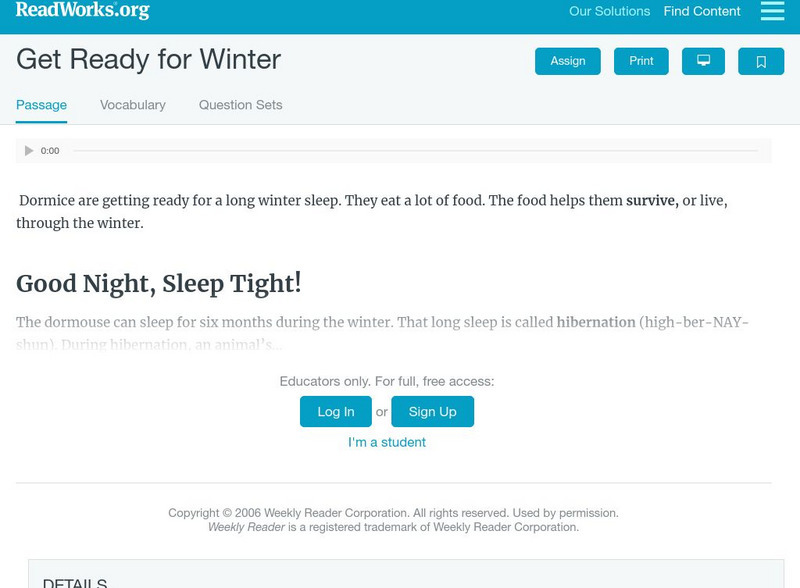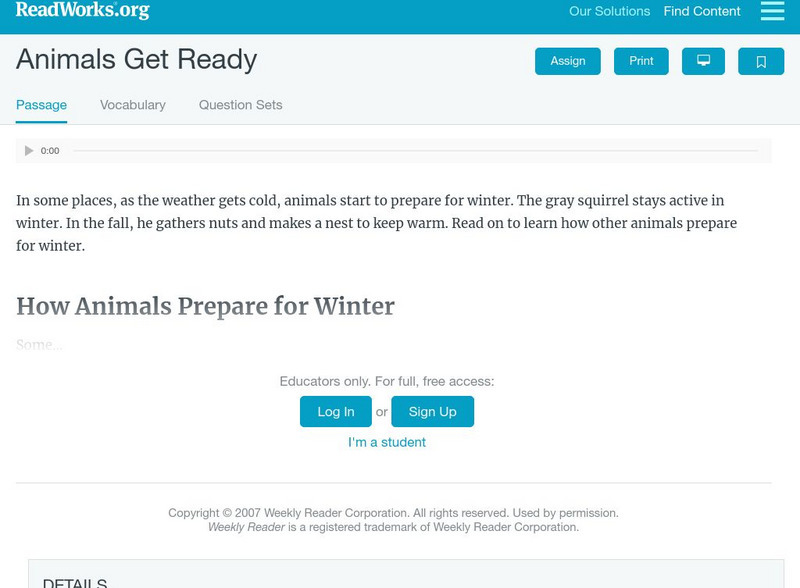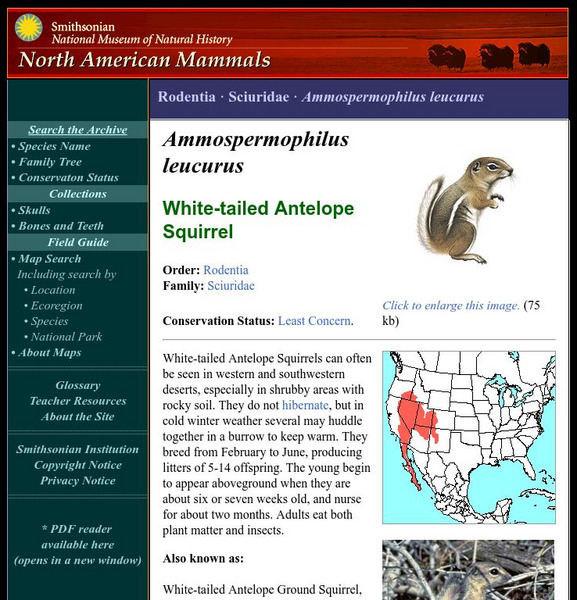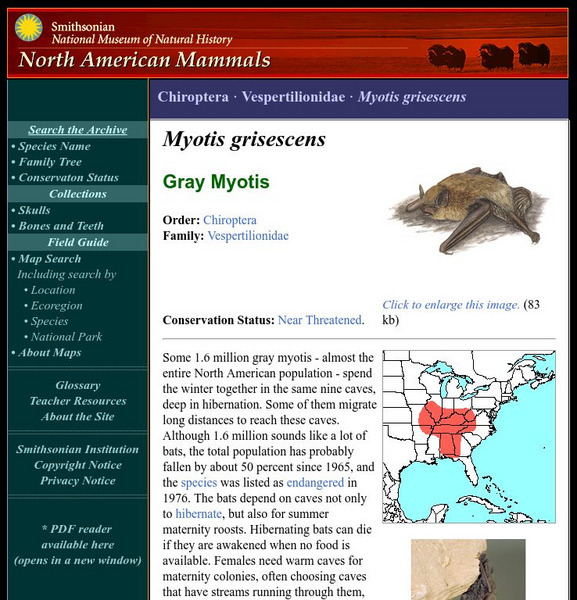Read Works
Read Works: Get Ready for Winter
[Free Registration/Login Required] Students read about animals that hibernate throughout the winter. A question sheet is available to help students build skills in comparing and contrasting.
Environmental Education for Kids
Eek!: Under in the Mud Read Aloud | Story Edventures
Under in the Mud by Laureanna Raymond-Duvernell takes you into the wintering world of ten Wisconsin animals as you listen to her read the book and talk about the animals in it. Learn about how animals hibernate, migrate, and adapt to...
Read Works
Read Works: Ready for Cold Weather
[Free Registration/Login Required] An information text about hedgehogs and how they hibernate in the winter. A question sheet is available to help students build skills in reading comprehension.
PBS
Nh Pbs: Nature Works: Little Brown Bat
The little brown bat lives along streams and lakes in North America. It forms nursery colonies in buildings. In the winter it hibernates in caves and mines. The content of this resource includes a look at this species' range, habitat,...
Read Works
Read Works: Animals Get Ready
[Free Registration/Login Required] Students read about how different types of animals prepare for winter. A question sheet is available to help students build skills in classifying and categorizing.
Smithsonian Institution
National Museum of Natural History: American Mammals: Western Red Bat
This close cousin to the eastern red bat (Lasiurus borealis) is genetically distinct. These bats are found along the west coast and the southwestern US and into Mexico where they are thought to hibernate in the winter. Learn more about...
Read Works
Read Works: Animals Get Ready
[Free Registration/Login Required] An informational text exploring different ways animals prepare for winter. A question sheet is available to help students build skills in reading comprehension.
Smithsonian Institution
National Museum of Natural History: American Mammals: White Tailed Antelope Squirrel
White-tailed Antelope Squirrels can often be seen in western and southwestern deserts, especially in shrubby areas with rocky soil. They do not hibernate, but in cold winter weather, several may huddle together in a burrow to keep warm....
Curated OER
Little Brown Bat
The little brown bat lives along streams and lakes in North America. It forms nursery colonies in buildings. In the winter it hibernates in caves and mines. The content of this resource includes a look at this species' range, habitat,...
Curated OER
Little Brown Bat
The little brown bat lives along streams and lakes in North America. It forms nursery colonies in buildings. In the winter it hibernates in caves and mines. The content of this resource includes a look at this species' range, habitat,...
Curated OER
Little Brown Bat Baby
The little brown bat lives along streams and lakes in North America. It forms nursery colonies in buildings. In the winter it hibernates in caves and mines. The content of this resource includes a look at this species' range, habitat,...
Curated OER
Little Brown Bat
The little brown bat lives along streams and lakes in North America. It forms nursery colonies in buildings. In the winter it hibernates in caves and mines. The content of this resource includes a look at this species' range, habitat,...
Smithsonian Institution
National Museum of Natural History: American Mammals: Mohave Ground Squirrel
The Mohave Ground Squirrel occupies a relatively tiny part of the Mohave Desert and is rarely seen since it spends more than half the year underground in a burrow. Estivation, the hot-weather equivalent of hibernation, and hibernation...
Smithsonian Institution
National Museum of Natural History: American Mammals: Gray Myotis
Some 1.6 million gray myotis - almost the entire North American population - spend the winter together in the same nine caves, deep in hibernation. Learn more about the Myotis grisescens, more commonly known as a Gray Myotis, in this...









